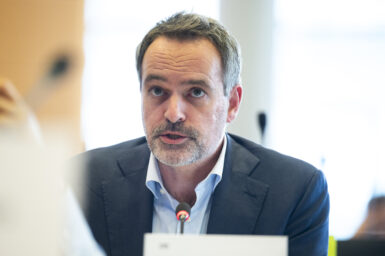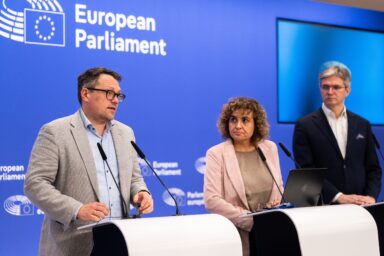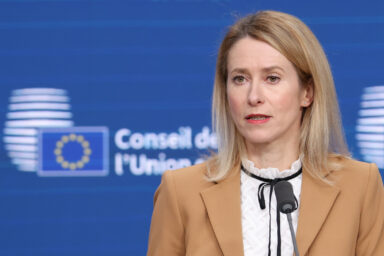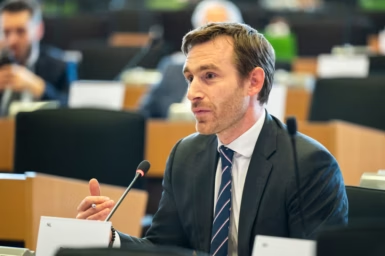The European Commission’s Competitiveness Compass is rich in investment ideas but short on resources. Financial Times veteran Brussels correspondent Andy Bounds calls for a clear EU strategy that private investors will need to help fill the gap. In an EU Perspectives podcast, he exchanged views with prominent voices on the matter: Bruegel’s Zsolt Darvas, MEP Tomáš Zdechovský (EPP) and Melchior Szczepanik, head of the Polish Institute of International Affairs’ Brussels office.
The European Commission’s plans to drive away the spectre of insufficient competitiveness on the global stage are bristling with ideas. Whether they are universally popular or court controversy, they share a key feature: they require a lot of money the Union does not have.
“The Competitiveness Compass, which the Commission is issuing, has a whole list of things that need to happen to help our economy catch up with the US and China. But there’s no money mentioned in it. I looked for figures, but there’s nothing,” Financial Times long-time EU correspondent Andy Bounds told an EU Perspectives podcast last Wednesday. “But just look at the implication. Electricity grids need to improve. We need a massive transformation of our industry, reskilling people to work in different ways. And this all is going to cost money. So the interesting question is, yeah, where will that come from?”
Urgent and expensive
Not from the Union’s budget, that much is clear. Stretched as it is, it cannot cover but a fraction of the costs. Mr Bounds spoke of the reasons of – and a possible way out of – the resulting financial quagmire. “The budget is still very old-fashioned. About one-third of the money goes to agriculture and about one-third goes to cohesion, meaning money paid to poorer regions to get richer,” the journalist avoided the omnipresent Brussels jargon with gusto. “So there’s only really one third of the budget that’s sort of flexible at the moment to fund the priorities.”
But the list of the European Union’s priorities has been growing considerably over the past decades. The global financial crisis and the ensuing debt crisis; the Green Deal; the host of issues related to the Covid-19 pandemics; the Russian invasion of Ukraine; the technological rise of China – you name it. All urgent, and one more expensive than the other. The FT correspondent listed potential solutions.
“There are lots of private investors looking for projects – green transition projects, green steel, green hydrogen – but at the moment most of the projects are not marketable, they’re not profit-making. So you either need some public investment to create the market or address the market failure, or encourage the private actors to invest on the back of a clear strategy,” Mr Bounds said. He emphasized that in order to risk their money, the investors must have some assurances of the EU’s general strategic direction.
“They must know if they can expect some returns. I think there is private money waiting, but the people are sort of waiting and seeing which way the EU goes. Will some of the regulatory barriers to doing business actually come down?” explained the writer, who regularly pens his newspaper’s influential Europe Express newsletter.
You might be interested
The tipping point
Mr Bounds went on to mention the advantageous position the European market might enjoy if properly conditioned. “The investors have the choice between the market of 450 million, which is very rich, and the potentially interesting, but still quite segmented US market. The Chinese market is complicated because China is not a market economy, but nevertheless has a set of policies you can understand. And you think – if I invest here, I must know what I’m going to get returned,” Mr Bounds said, implying that Europe is in need of more clarity.
When the role of private money is concerned, insiders in the navy-blue European Union room can easily see a huge white elephant the size of €33trn, the sum of European savings sitting rather idly on the sidelines. “The other big question behind this is whether you can use more private European savings. There are a lot of different national markets and the money doesn’t really get put into big enough pots,” the journalist said.
“There’s something called the Savings and Investment Union, which is a project that the EU has been trying to get off the ground for a decade,” Mr Bounds added with a whiff of the usual London-bred scepticism toward Brussels’ financial management practice. “And the Commission is hopeful this is the moment when member states will say, OK, we agreed to have one-regulator savings across twenty-seven countries so that we have big enough pots of money. My question here is – are we now at the tipping point?”

Solving national problems
The Savings and Investment Union is a project that would allow for seamlessly executed – and insured – investing across the EU’s internal national borders. But the lack of member states’ political will to adopt such a scheme mirrors the enthusiasm with which the states direct any funds arriving from Brussels to alleviate their own needs, neglecting the EU as a whole. “A lot of member states choose to go to Brussels to solve their problems, often actually national problems,” Mr Bounds observed.
His podcast partners appeared to concur. “This is really one of the stupidest ideas in the European budgets, to give money to all the member states so that they could solve their small problems,” Tomáš Zdechovský, MEP for the European People’s Party put forward a straightforward argument.
“Take the defence budget. It shouldn’t mean that the EU give money to Czechia, to Poland, to Hungary, for their projects. We need European projects, we need European tank, we need European aircraft, we need European air defence.” Some of these projects cost a lot of money that cannot be paid for out of the Czech or Polish or Belgian pocket. We need to do it together, and it will be much easier and cheaper like that,” Mr Zdechovský said.
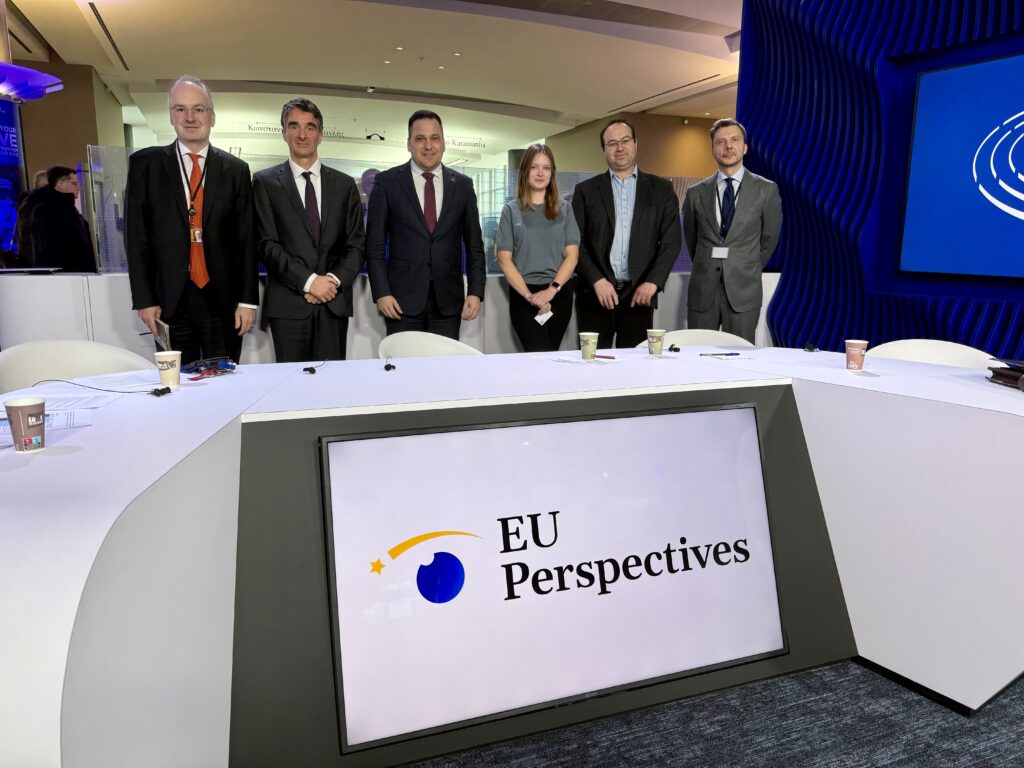
Yet another distinguished participant of the podcast, head of the Brussels office of the Polish Institute of International Affairs, Melchior Szczepanik, struck a more conciliatory note. “This is closely connected to the question of what the EU member states want to do and finance together. And if you look at the major programmatic documents of the European Union, such as the strategic agenda or the political guidelines of the European Commission, you can see that there is quite a lot of what they want to do together. They believe that if they finance it in common, if they coordinate actions, and finance these projects in common, they can get more bang for their buck, so to speak.”
Bringing actual value
The idea that the Union’s coffers should primarily finance EU-wide projects got some traction among the podcast’s participants. Zsolt Darvas, Senior Fellow at the Brussels-based Bruegel think-tank, elaborated: “I think that the general principle should be that you should only finance projects and programs which benefit the whole European Union,” he said. “For example, one objective of the common agriculture policy is to support the living standard of people working in the sector. But that’s not something which makes Europe more competitive or more complete.”
“Indeed,” the Hungarian academic expanded, ”this includes the digital transformation, quite importantly, cross-border projects. National governments focus a lot on their own countries, but much less on, say, connecting different grids across countries. So very much focus should be on where the EU can really bring value.”

